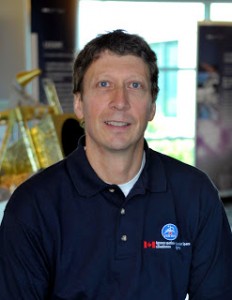
First time Canada controls instruments operating on red planet
By Robert Frank
Notre Dame de Grâce resident Stéphane Desjardins is at the forefront of Canadian scientific instruments that will spend the next two years searching for evidence that Mars is capable of supporting life.
“We’re not looking for proof of life itself,” the CanadianSpace Agency’s director of exploration projects told The Suburban in an interview. “We’re just looking at the biological potential in the region where the Curiosity rover landed.”
Desjardins directed the project to build a device called an alpha particle x-ray spectrometer (APXS) that will beam back information about the red planet’s geology, radiation and other environmental data.
“On Earth, we know that life can exist if there are organic compounds, water and a source of energy. Those are the kind of things that we will be looking for,” he explained. “We want to find out whether those conditions exist or have existed on Mars.”
Desjardins highlighted how a team of more than a thousand engineers, most of them employed by MacDonald, Dettweiler & Associates, helped to perfect the Canadian-built APXS, which is designed to detect the composition of Martian rocks and soil more rapidly and continuously than any previous mission.
“The new APXS can also provide reliable data over a broader [temperature] range by introducing a cooler, so the instrument is not limited to a certain time of the day,” he said. “It can be used throughout the day.”
Controlled from Canada
According to Desjardins, now that Curiosity has safely landed on Mars, NASA will spend the first few days checking that all the systems are working properly.
“They’re doing what is called an aliveness test of the instruments. After that, they will spend the next couple of weeks testing how well the instruments function. This is a long, one Mars-year (two Earth years) mission, so they want to take the time to ensure that everything is in proper order before we start surface operations.”
“That’s when the rover will start moving and taking samples,” he continued, “which will happen around September.”
“Providing an instrument like APXS includes Canadian scientists in the overall team for the whole $2.5 billion NASA mission,” Desjardins enthused, “making us [full-fledged] members of the scientific team.”
“After operating from the Jet Propulsion Laboratory in Pasadena, California for the first three months, the scientists will return to their home institutions,” he continued. “The Canadian instruments will [thereafter] be operated from Guelph University, marking the first time that we will operate an instrument on Mars from an operations centre in Canada.”
Desjardins, who was also involved in the 2008 Phoenix mission, which measured atmospheric conditions and discovered frozen water at the Martian north pole, is even more excited about the Curiosity mission.
“This one is more satisfying, because it will come into contact with Mars’ soil and rocks.”
“It is quite impressive to land an object the size of a small car 570 million kilometres away within two kilometres of its target landing zone,” Desjardins added. “Even more impressive is that [Mars is so far away that] the whole landing sequence had to be done autonomously.”
“Radio communication with Earth takes 14 minutes, and the whole landing sequence—from the time Curiosity entered the Martian atmosphere to touchdown—took just seven minutes, so the spacecraft had to execute the entire landing by itself.”
Canadian Space Agency director of exploration projects Stéphane Desjardins was also involved in the 2008 mission to Mars as well as the Curiosity probe which landed this week.

